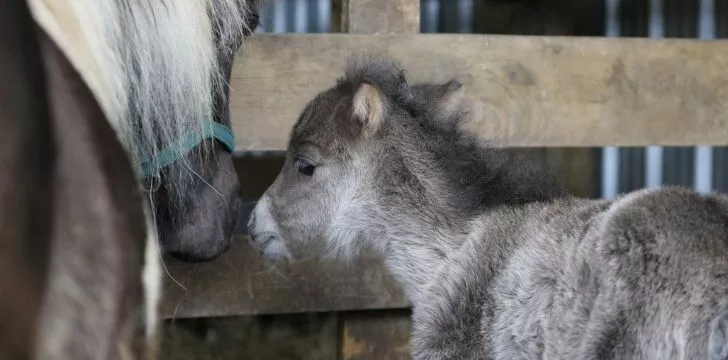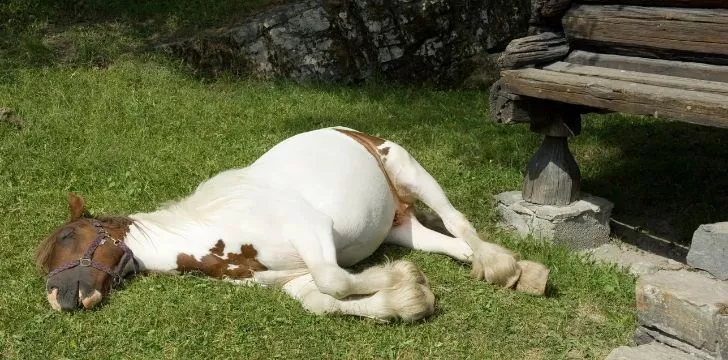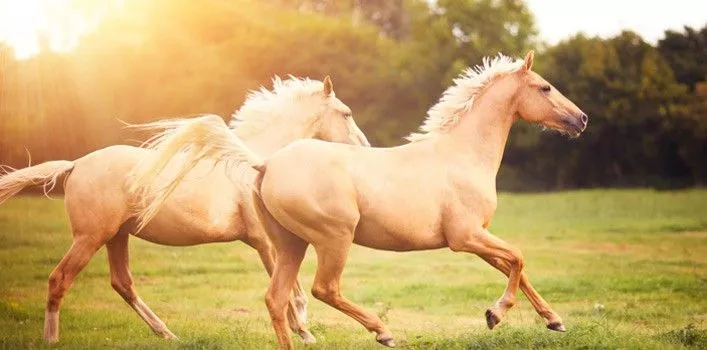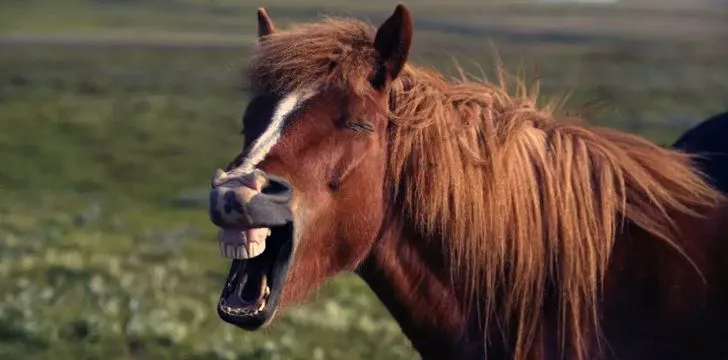Did you know that horses have the largest eyes of any land mammal?
Horses are magnificent animals that are admired by thousands of enthusiasts who enjoy riding or showing them every year.
Here are some important (and some very interesting) facts you might like to know about horses.
- Horses have different names depending on their gender.
- Baby horses have different names too!
- Newborn horses can walk shortly after birth.
- Horses have fewer bones than humans.
- The oldest horse lived over twice as long as expected.
- Horses can sleep standing up or lying down.
- Horses have a lookout…
- Horses don’t smile to show happiness.
- Horses are herbivores.
- The fastest horse ran over double the usual speed!
- The horse population is not a concern.
- Horses have exceptional vision!
- Horses can’t see in full color.
- Horses appear to float when they run.
- Their teeth take up a lot of space.
- Horses are More Intelligent Than We Believe and Display a Variety of Facial Expressions
- FAQ
Horses have different names depending on their gender.

A male horse is called a stallion, while a female horse is a mare.
A male horse that has been castrated is known as a gelding.
Baby horses have different names too!
Young horses have different names – a young male is called a colt, and the young females are fillies.
Newborn horses can walk shortly after birth.

Baby horses can walk and run after just a few hours of being born.
Horses have fewer bones than humans.
There are only 205 bones in the skeleton of a horse, one less than in a human skeleton.
The oldest horse lived over twice as long as expected.

Horses that have been tamed usually live to be around 25 years old.
However, the oldest domestic horse on record was Old Billy, who died at the age of 62.
Horses can sleep standing up or lying down.
Many people believe that a horse lying down means it’s sick, but these creatures can sleep either standing up or lying down.
Horses have a lookout…

A group of horses will not go to sleep at the same time – at least one of them will stay awake to watch out for the others.
Horses don’t smile to show happiness.
Horses are often seen in photographs “laughing” or “smiling,” but this movement is actually to help them smell better.
Horses are herbivores.

Horses only eat plants, making them herbivores.
The fastest horse ran over double the usual speed!
For a regular horse, their top speed is approximately 27 miles per hour, although the fastest horse ever recorded could reach 55 miles per hour!
The horse population is not a concern.

There are an estimated 60 million horses in the world, combining wild and domesticated horses.
Horses have exceptional vision!
The eyes of a horse are larger than any other land mammal, and their position on the side of their heads allows them to see almost 360 degrees.
Horses can’t see in full color.

Experts previously believed that horses were completely color-blind, but this has been disproven.
They can, however, see certain colors more clearly than others.
Horses appear to float when they run.
When a horse gallops, all four hooves are off the ground at one point.
Their teeth take up a lot of space.

Did you know that horses have teeth that are bigger than their brains? That’s right, the space occupied by their teeth is greater than that of their brain. In fact, horses’ brains are quite small, weighing only around 22 ounces, which is half the weight of a human brain. Horses are not so different from humans though; they have facial expressions to convey their moods, just like us. Unlike many other mammals, horses do not have a gag reflex, and it is impossible for them to vomit. Instead of being measured in feet and inches, horses are measured in hands, with one hand being equivalent to four inches. Surprisingly, there are over 300 different horse breeds in the world, ranging from the tallest horse ever on record, Sampson, who stood at a staggering 21.2 hands high, to the smallest horse ever, a tiny 14-inch pony named Einstein. Horses are also big fans of water and will drink a minimum of 25 gallons every day. Did you know that zebras and horses can breed to produce “zebroids,” and that horses can be cloned? Additionally, horses have been used in the police force since the 17th century, and the oldest surviving breed of horse, the Arab, is believed to have appeared about 4,500 years ago. Finally, while horse meat is illegal in some countries, it is considered an expensive delicacy in others, such as France. With their excellent memories and long history of domestication, horses have a special relationship with humans and have been there for us as both transportation and companionship.
Horses are More Intelligent Than We Believe and Display a Variety of Facial Expressions
Contrary to popular belief, horses possess higher levels of intelligence than commonly assumed and have the ability to convey a range of emotions through their facial expressions, much like humans.
FAQ
1. What is the average lifespan of a horse?
The average lifespan of a horse is around 25-30 years. However, some horses can live up to 40 years with proper care and management.
2. How fast can a horse run?
The fastest recorded speed of a horse was 55 miles per hour. However, the average speed of a horse is around 30 miles per hour.
3. Can horses see in color?
Yes, horses can see in color, but not as vividly as humans. They can distinguish between blue and yellow, but not red and green.
4. How many teeth do horses have?
Horses have between 36 and 44 teeth, depending on their age. They have 12 incisors and 24 molars, with males also having 4 canine teeth.
5. What is the largest horse breed?
The largest horse breed is the Shire horse, which can weigh over 2,000 pounds and stand over 18 hands tall (6 feet at the shoulder).
6. Can horses sleep standing up?
Yes, horses can sleep standing up, but they also need to lay down for deep REM sleep. They have a unique “stay apparatus” in their legs that allows them to lock their joints and rest without falling over.
7. How long does it take for a foal (baby horse) to stand and walk?
A foal can typically stand and walk within 1-2 hours after birth. Within a few hours, they are able to run and play with their mother and other horses.

Zayn Anderson is a prolific writer with a passion for uncovering the world’s intriguing facts. Armed with an insatiable curiosity, he delves into various subjects, from history and science to nature and technology.
